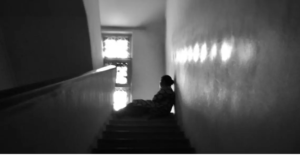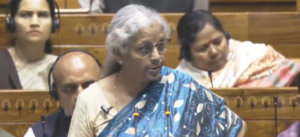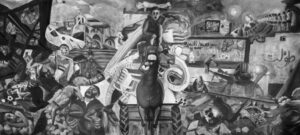The Prioritization of Human Health, Development and Self-Activity
[The Bolivarian Revolution, led by Hugo Chávez until his death in 2013, has undergone multiple phases since President Chávez’s first election in 1999. Twenty years ago, a new form of social services, the mission, was created to bypass recalcitrant bureaucrats and to enable the participation of those receiving social services. Another initiative, the commune, was conceived as a way of enabling people to organize for, and create solutions, to problems at the grassroots level. In this excerpt from ‘What Do We Need Bosses For?: Toward Economic Democracy’, the beginnings of these two programs are discussed.]
Begun in 2003, the [Venezuelan government created] missions [that were] social-welfare programs organized through mass grassroots participation and funded by the national government. Achieving more control over the state oil company and the sharp increases in oil prices enabled the government to generously fund the missions. Given the corruption and inertia of the state bureaucracy, and the unwillingness of many professionals to provide services to the barrios, the missions were established to provide services directly while enabling participants to shape the programs. Political scientist Juan Carlos Monedero explained the decision to go around established institutions:
“The memory of the [pre-Chávez] Fourth Republic* was too intense, and the sociological fourth republicanism pervaded the state apparatus in an absolute way. The intentions to use the public administration to pay the social debt in education and sanitation were answered by civil servants long established in the state structures with a resounding no. If Venezuelan doctors were not willing to go up the hills (of the shanty towns), it was necessary to resort to other formulae. If the economic administration organs had no answers for over half the population, it was necessary to find other mechanisms. A sort of parallel state with people’s participation was put in motion. The answers required were found by resorting to the organization of the people and in some cases to help from Cuba (which, like any other country, exported what it was competitive in). Around 18 thousand Cuban medics as well as a strong social impulse began to fill in the traditional holes of the Venezuelan state.”
These missions brought positive results, concurs Margarita López Maya, a political scientist and historian who has taught at the Central University of Venezuela since 1982. They enabled access to services and assistance previously denied under the austerity of previous governments, she wrote:
“Missions (programs bypassing uncooperative or ineffective state agencies), such as Barrio Adentro (free 24 hours a day primary health care and disease prevention for low income groups), Mercal (state distribution of food at subsidized prices), Robinson 1 and 2 (literacy and primary education for adults), Ribas and Sucre (secondary and university education for those who had missed or not finished these), Vuelvan Caras (training for employment), and the Bolivarian schools, where a full day schedule has been restored, with two free meals and two snacks a day, plus free uniforms and textbooks: all these undoubtedly had a positive political impact. The government has also invested in the social economy, as in the ‘ruedas de negocios,’ in which the creation of cooperatives is encouraged in order to supply goods and services to the state sector. The government has also created a system of micro-financing with the Women’s Bank, the Sovereign People’s Bank, and so on, which make small loans to lower income borrowers.”
Neoliberal conceptions of micro-finance are based on attempts to put a “human face” on World Bank and International Monetary Fund structural-adjustment programs and designed to accompany the forced opening of Global South economies to predatory multinational financial-service corporations and impose market “solutions” to poverty stripped of all references to relations of power and domination — and not only fail to ameliorate poverty but sometimes make it worse. In contrast, the Women’s Development Bank holds dialogues with recipients to understand what their needs are, and then provides training based on community needs and expectations to go with the credit, and helps women organize themselves and to help them learn to monitor the bank’s performance.
Human health and development become the priorities
Improvements in health care were helped by Cuban doctors, who were assigned to 1,600 medical offices around the country, and eventually trained Venezuelan doctors to replace the Cuban doctors. The Barrio Adentro mission sought to create an integrated health care system including clinics and hospitals. Two other missions related to health are José Gregorio Hernandez (named in honor of a “people’s doctor” known for his dedication), which provides a census of all people with a genetic deficiency or illness, and Milagro, which provides free ophthalmologic pathology services, a program that began to be expanded elsewhere in Latin America.
Among the approximately two dozen missions are Alimentación, which incorporates the Mercal network that provides food at subsidized prices and a distribution system; Cultura, which seeks the decentralization and democratization of culture to ensure that all have access to it and stimulate community participation; Guaicaipuro, intended to guarantee the rights of Indigenous peoples as specified in the constitution; Madres del Barrio, designed to provide support to housewives in dire poverty and help their families overcome their poverty; Negra Hipólita, which assists children, adolescents and adults who are homeless; Piar, which seeks to help mining communities through dignifying living conditions and establishing environmental practices; and Zamora, intended to reorganize land, especially idle land that could be used for agriculture, in accordance with the constitution.
The missions have “permitted poor Venezuelans especially to overcome the effects of two decades [prior to Chávez’s first election] of economic stagnation, political apathy and pessimism about the future,” according to López Maya. The first years of the missions were years of strong economic performance. From 2003 to 2008, unemployment fell by more than half, to 7.8 percent; gross domestic product increased by more than 50 percent; inequality as measured by the Gini coefficient (the standard metric), although still high, noticeably decreased; the human development index strongly increased; and poverty rates strongly declined.
An important factor in these gains was the high price of oil, which doubled from 2003 to 2006. The ability of the government to retain more of the revenue from oil sales also helped. But the dangerous dependency on a single export had not changed, López Maya wrote:
“It is important to emphasize that these advances are almost exclusively based on oil revenues. According to the Venezuelan Central Bank, in 2006, 89 per cent of our exports were oil. We are as dependent on oil as in the past, if not more so. If we examine the current relationship between the state and PDVSA (the state-owned oil corporation) in terms of the hard currency earned by the firm, in 2006 the state received 68 per cent while 32 per cent remained in the hands of PDVSA. The oil sector represents 14 per cent of the [gross national product].”
Concurrent with capturing more revenue from oil, the government sought to make tax collection more efficient. Tax collection had been a traditional weakness in the past. Some success in getting foreign multi-national corporations to pay taxes increased government revenue, although in 2009 what was collected remained below the Latin American average. Because of the strong increase in revenue from oil, that resource became more important to the government’s ability to fund social programs — the percentage of government revenue from oil increased from 25 percent in 1998 to 40 percent in 2008.
Then there is the question of the sustainability of the missions, a question that arises not only because of downturns in the price of oil, but whether they will be institutionalized. The missions represent a parallel government, seen as necessary because of the need to provide immediate relief to large, long-standing problems and a lack of time to dismantle bureaucratic obstructions. Continued mass participation is a crucial element that can guarantee the sustainability of the missions in the long term, but some formality is necessary if the state bureaucracy isn’t to reassert itself in the future. This is an issue that must be resolved, Monedero argues:
“Essential public goods which the Fourth Republic had denied for decades reached the poorest sectors of the citizenry. The novelty of the initiative, the initial success, the people’s mystique which followed the first moments of this parallel state made their recognition most ample. Nevertheless, once that period was over, everything seemed to indicate that the missions need, in order to be consolidated, some sort of institutionality which integrates them in a more stable political realm so that it is not sustained by volunteer labor nor by abstract motivation. The role of the state here appears to be relevant and like a guarantee to complete that process (which does not mean it be the traditional liberal state). Nevertheless it has yet to be resolved what the role of the state apparatus in the discourse and the practice of the so-called socialism of the twenty-first century is.”
Advancing ‘constituent power’ through communal councils
Similar to the establishment of the missions to provide services by going around a recalcitrant bureaucracy, communal councils and communes were established to bypass local and state governments sometimes unresponsive to grassroots demands and in some cases opposition strongholds hostile to the democratizations of the Bolivarian process. The communal councils have their roots in the assemblies that barrio residents created following the Caracazo [a massive 1989 revolt triggered by a new government’s sudden implementation of a severe International Monetary Fund austerity program and the deadly indiscriminate force used against protestors].
The Barrio Assembly of Caracas emerged in 1991 as something of a general assembly representing local groups, coming into being after demonstrations marking the first and second anniversaries of the Caracazo were dispersed by soldiers firing on them from rooftops. Later versions of these assemblies organized on the eve of the 2002 coup attempting to overthrow Hugo Chávez; among their accomplishments were distributing 100,000 fliers calling for a march on the presidential palace to defend the government. With these grassroots organizations in mind, local participation was enshrined in the 1999 constitution. The constitution, through several articles, codifies public participation in municipal budgeting and established local public planning councils to facilitate that participation.
The public participation in formulating the budget of the city of Porto Alegre in Brazil was the model, although the Venezuelan version was intended to go further by authorizing the direct financing of community programs through access to a special national fund set up to finance local projects and for citizens to be directly involved in local development plans. But these local planning councils generally didn’t function. Local mayors either found ways to control them or ignored them; in many cases they and other officials sat on them. Their failure is attributed to being organized across municipalities with populations as large as hundreds of thousands, far too large for direct democracy to work, and that these were bodies decreed from above rather than formed as grassroots initiatives and thus lacking a methodology for communities to elect genuine representatives.
In the wake of the failure of the local planning councils, the communal councils were created. These are the basic building blocks of the communal system but in contrast to the citywide structure of the former, the communal councils operate at a neighborhood level and are direct-democracy bodies, with no seats for municipal office holders. In essence, the communal councils are the base of an alternative government structure, one intended to bypass municipal and other local governments and to eventually replace them. This was an attempt to provide a concrete form to the concept of “constituent power,” the idea that people should be direct participants in the decisions to affect their lives and communities, as distinct from “constituted power,” under which decision-making is ceded to elected officials and business elites.
Those most affected are best positioned to make decisions
Legislation passed in 2006 formally recognized the communal councils and the form quickly gained popularity — there were an estimated 30,000 in existence by 2009. These councils are formed in compact urban areas containing 200 to 400 households in cities and 20 or so in rural areas. All residents of the territory are eligible to participate. In turn, communal councils organize into larger communes, and communes into communal cities, to coordinate projects too large for a neighborhood or to organize projects necessarily on a larger scale, such as improving municipal services.
Article 1 of the law governing communal councils states:
“Within the framework of a participative and protagonist democracy, the Communal Councils represent the means through which the organized masses can take over the direct administration of the policies and projects which are created to respond to the needs and aspirations of the communities in the construction of a fair and just society. The organization, operation and action of the Communal Councils are governed by the principles of co-responsibility, cooperation, solidarity, transparency, accountability, social responsibility, fairness, justice, social controllership and economic self-management.”
The communal councils are described in Article 3 as a “system for participation and protagonis[m] of the people” and that, as codified in Article 4, participants have the obligations of “social co-responsibility, accountability, as well as the transparent, timely, and effective management of the monies allocated to them.” All inhabitants of the area encompassing a communal council above the age of 15 are members of the council’s assembly, which is the highest decision-making body. The day-to-day work of the communal council is conducted by committees focused on whatever issues the local community deems a priority. Spokespeople are elected by the assembly for each committee; these are not representatives but are directly accountable and subject to recall. They do not make decisions by themselves. They can be elected for a maximum of two two-year terms. Financial and “social control” (public-audit) committees are also elected.
At least 20 percent of the inhabitants older than 15 must be in attendance for an assembly to achieve quorum. The communal council is required to propose three projects that will contribute to development in the community; funding for approved projects will usually come from national-government bodies. About 12,000 communes received a total of one billion bolívares (out of a national budget of 53 billion) in 2006, and in 2007 about six billion bolívares were provided.
Communal councils had already been in formation, and those organizing pushed for the law codifying them. As explained by a Caracas activist, Eduardo Daza:
“It’s not that the president said, ‘here’s a new law, from now on it’s going to be like this.’ It wasn’t like that, we went all the way to the National Assembly [the federal legislature] to fight for the law of communal councils and though many of the demands we made were not incorporated into the law, nevertheless the law let us take the first step.”
Projects for infrastructure and basic services tend to be the priorities for communal councils. Improvements to sewage and water systems, road building and repair, fixing or building housing, and electrical-grid projects were common needs that were addressed. Community activist groups often supported the creation of the councils, and activists and councils tend to work together. Building the councils is also seen by many activists as a route to building socialism. According to a manifesto issued after a meeting of communal council members:
“We as communal councils believe that the most expeditious way to build the communal state is to assume power at the local level, from an economic, political, military, social and cultural perspective; therefore, we must act in a bloc, giving us higher levels of organization and coordination, it being essential that we constitute a movement that gives us voice, body and face as communal power, throughout the process of building socialism in Venezuela.”
An interesting development is that many (in the case of councils studied by researchers, a majority) who have taken active roles in the communal councils were not politically active before the 2002 failed coup. Generally, women outnumber men among the active participants, and it is often older women taking the lead. The culture of participation that the councils encourage and that the Bolivarian government is paying vastly more attention to solving social problems and the needs of the poor than prior governments has facilitated the organizing of women, and the new activity of women in turn is breaking down traditional macho attitudes. Health committees tackling problems of illness, access to contraception and motherhood are often where participation begins. Once involved, women sign up for training programs, with more women than men taking advantage of these.
In turn, increased participation leads to more community involvement in solving social problems that were previously kept behind closed doors. As a communal activist in Caracas, Petra Rivas, a hairdresser who sat on her council’s social-audit committee, said: “My life has changed 100%, … I have changed much. … More than anything, we have humanized, because before it was from the front of your door to inside your house. You didn’t know what was happening with your neighbor, or to that neighbor woman whose husband you saw drinking all night while she had no food. And we integrated ourselves, we spoke with the woman, look, we’re going to bring you in here, look at your husband, speak up, don’t let him mistreat you, this is the woman’s house, go to the prosecutor.”
[* Venezuela’s Fourth Republic was the constitutional structure of the country’s government from 1961 to 1999. With the voter approval and institution of a new constitution in 1999, Venezuela’s new constitutional setup is the Fifth Republic.]
[This is an excerpt from ‘What Do We Need Bosses For?: Toward Economic Democracy’, a study of nations that have attempted to construct post-capitalist societies, published by Autonomedia. Citations omitted. Courtesy: Systemic Order Blog, the blog of Pete Dolack, an activist, writer, poet and photographer.]




